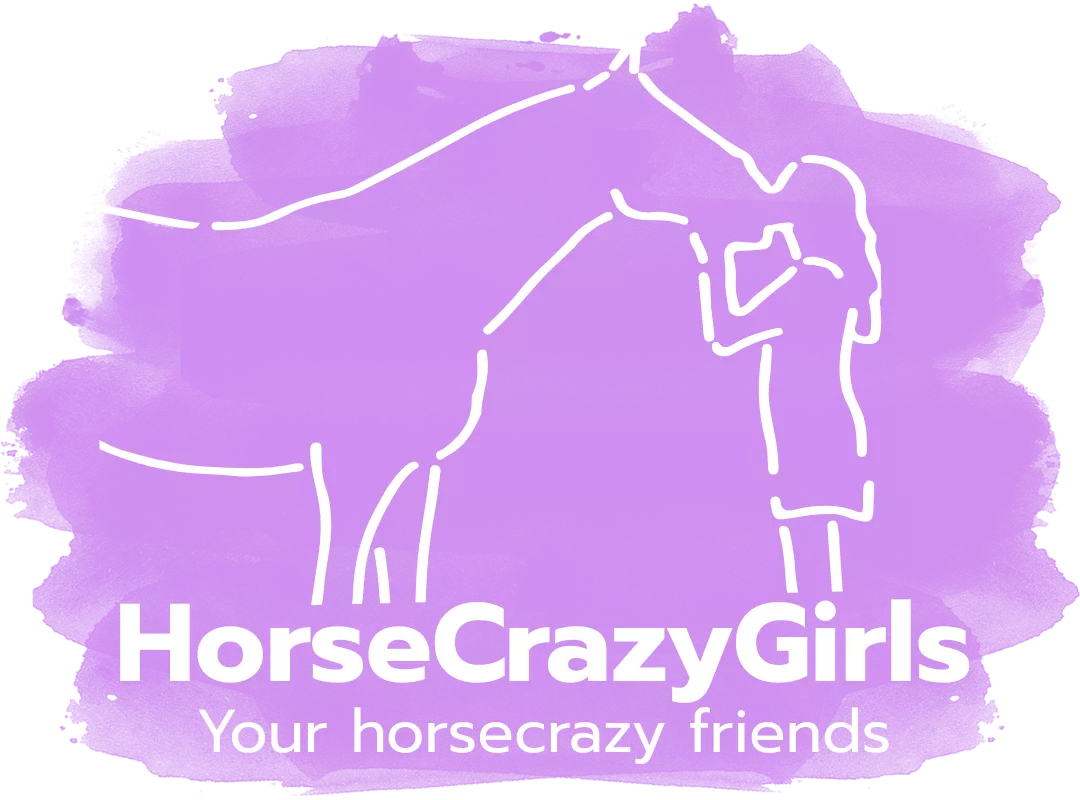PONY BREEDS
We all love horses, but ponies have that extra cuteness factor! That’s why we have made a dedicated page for just pony breeds.
Want to learn more about horses and ponies? Check out our pages on:
- Horse breeds
- Draft horses
- Warmblood breeds
- Different horse breeds
Before diving into all the different breeds of ponies, let’s talk about coloration and some terminology.
A pony by definition is a horse under 14.3 hands. This means that even if you have and American Paint Horse, an American Quarter Horse, a grade pinto, etc., and they are 14.2 hands or smaller, they are technically a pony. Ponies can come in different sizes and colors, but depending on their breed and bloodlines, some colors will be more common than others.
CASPIAN HORSE
The Caspian Horse as they are formally known have the height of a pony, but the build and proportions of a horse.
BREED HISTORY
Originally from Iran, this breed was exported to Europe and the Americas during the turmoil in their native land.
Louise Firouz is largely credited for rediscovering this unique breed and saving them from extinction.
CHARACTERISTICS OF THE CASPIAN HORSE
Known for their ‘hot blood’ but even temperament the Caspian Horse is a great riding horse for beginners or for more advanced kids looking to shine in the show ring.
They typically range from 9 to 12 hands and usually are bay, gray, or chestnut. Black and dun are less common but do occur.
Described as looking like a small Thoroughbred the Caspian‘s genetics actually tell a different story. Genetically, they share the most ancestors with the Arabian horse. This helps to explain their endurance and their physical features which include their refined and slim build along with their large, prominent eyes.
FUN FACTS
This breed was once thought extinct for almost 1,000 years.
You can find out more about them through the Caspian Horse Society of the Americas.
CONNEMARA PONY
This breed of pony originates from a region in Western Ireland known as Connemara.
Breed History
Much like the legend surrounding today’s mustangs in America it is believed that the Connemara pony got its start when a Spanish Armada sank off the coast and the horses swam ashore and joined the herds in the area.
As families began to catch the wild Irish ponies and use them for farm work only the strongest and hardiest were kept.
CHARACTERISTICS
Their gentle disposition, stocky build, and athletic ability make the Connemara a great riding pony for younger and older equestrians.
They are typically 14 to 14.2 hands and either gray or buckskin in color. Although you can find them in black, bay, brown, chestnut, palomino, and roan.
They can be seen in tons of different disciplines although they are very popular sport pony especially among those that do three-day eventing (which combines show jumping, cross country, and dressage).
Fun Facts
Mares were actually preferred by farmers because if they had a foal the family could sell it.
DALES PONY
Ever wondered what a Friesian might look like as a pony? Check out Dales ponies.
BREED HISTORY
This breed of pony originated from the upper part of the U.K. near the Scotland border. Over time, and through selective breeding, the Dales pony was formed.The breed was specifically designed to be able to be hardy enough for tough farm work but also smooth enough to ride.
CHARACTERISTICS OF THE DALES PONY
Breeders have a lot of criteria to meet when it comes to Dale ponies. The ponies should be alert, intelligent, and courageous. Their coat color should be either black, brown, bay, gray, or roan. In terms of conformation, they should have powerful hindquarters along with well developed shoulders and a deep chest. All topped off with a long thick mane and tail.
FUN FACTS
The Dales pony served overseas in both World War I and World War II.
During the twentieth century many Clydesdale stallions were being bred to Dales mares, as their offspring brought in good profits for farmers, unfortunately this caused a big drop in the number of pure Dale ponies being born.
Read more about these ponies through the Dales Pony Society.
DARTMOOR PONY
One of the smallest and sturdiest ponies is the Dartmoor pony.BREED HISTORY
Originally from the Southwest in England these ponies are known for their sturdiness and ability to live in cold, rugged areas.
CHARACTERISTICS OF THE DARTMOOR PONY
The ponies in this breed are to be up only up to 12.2 hands. Their coat colors can range from black, roan, gray, chestnut, bay, or brown. They should have a robust but refined build and nice gaits that aren’t too exaggerated.
FUN FACTS
Dartmoor ponies are noted for being great ponies for kids.
EXMOOR PONY
The small size of these ponies is deceptive.BREED HISTORY
Coming from Alaska to Britain, being trained to pull chariots, and then almost going extinct these ponies have been through a lot.
CHARACTERISTICS OF THE EXMOOR PONY
Dartmoor ponies all look alike. They have the same coloring and are roughly the same size. These ponies are reliable, hardy, and can carry smaller adults.
FUN FACTS
The first wild ponies, that were ancestors of this breed, came from Alaska.
FALABELLA HORSE
The smallest horse breed is the Falabella.
They are miniature horses, not ponies, based on their builds, but in terms of height, they are ponies.
BREED HISTORY
This miniature horse is originally from Argentina and is said to have come about when Spanish invaders left behind their Andalusian and Spanish Barb horses after being defeated. These feral horses continued to produce smaller and smaller offspring. Then Patrick Newell came across the horses and decided to try and breed an even smaller horse. Eventually, with the help of his son-in-law Juan Falabella they created the Falabella. Today there are about 2,000 of these small horses registered.
CHARACTERISTICS
They are under 34 inches in height and must resemble the type of horse they were bred to. The Falabella is known for its sweet disposition and wide range of coat colors.
FUN FACTS
The smallest horse in the world is Falabella named Einstein.
FELL PONY
Once used by Vikings to pull sleds the Fell pony now has a more modern job.BREED HISTORY
Like many ponies and horses, these ponies had to serve many purposes. Not only would they have to do work on the farm but they would also have to carry a rider on occasion. Eventually, the Fell pony became very popular with miners as they were strong enough to transport coal and metals, but small enough to go underground at times.
CHARACTERISTICS OF THE FELL PONY
Fell ponies are under 14 hands, of sturdy builds, calm temperaments, and an excellent trot. They are typically black, brown, gray, or bay. Although some are chestnuts, piebalds, and skewbalds.
FUN FACTS
The Queen of England breeds Fell ponies, Shetland ponies, and Highland ponies.
HACKNEY PONY
The Hackney pony is the smaller version of the Hackney horse.BREED HISTORY
The Norfolk Trotters and Thoroughbreds in Norfolk, England gave birth to the horses that would eventually produce Hackneys. These horses were prized for their high stepping trot and quick pace, making them great carriage horses. Eventually, this breed made its way to America.
CHARACTERISTICS OF THE HACKNEY PONY
Coming in black, bay, brown, and chestnut the Hackney pony is known for its high-stepping trot. They have small heads, compact bodies, and good muscling.
FUN FACTS
The first Hackney pony in America was a mare named Stella.
More information about the Hackney pony can be found here.
HALFLINGER HORSE
The Haflinger is technically a breed of horse. However, because they end up with so many ponies I decided to include it on this page.BREED HISTORY
The origin of this breed can be traced to modern-day Austria/Northern Italy. These horses were bred for both pulling carts and riding. During the early years, these horses were being bred with a taller more refined build in mind, but during WWII this all changed when the army needed a smaller, stockier horse.
CHARACTERISTICS OF A HALFLINGER HORSE
Typically between 13-15 hands most of these horses are the size of a pony. They carry the unique white mane/tail and golden chestnut color (what many of us think of as palomino).
Of course, the breed is also strong and is meant to have a good constitution. They are popular for a wide range of activities thanks to their versatility.
FUN FACTS
All registered Haflingers must be able to trace their lineage back to the stallion Folie (the original Haflinger stallion).
Find out more about the breed here.
HIGHLAND PONY
For those that want a hardy pony (that almost resembles a shire horse) a Highland pony may be a good option.
BREED HISTORY
Coming from Scotland and the West Isles these ponies were bred, like many other ponies, as a great hardy all-around pony. They could help pull heavy loads of things like timber and then be ridden into town.
CHARACTERISTICS OF A HIGHLAND PONY
A registered Highland pony is to sit under 14.2 hands, have a powerful build, and refined head features. They come in several dun colors: mouse, yellow, cream, or gray. They can also be black, grey, brown, bay, or a liver chestnut.
FUN FACTS
This breed of pony is bred by the Queen of England and is only one of two native Scottish pony breeds.
You can learn more about the Highland Pony through the Highland Pony Society.
ICELANDIC HORSE
If you love gaited horses, but want something a little smaller you should check out the Icelandic.BREED HISTORY
The Icelandic horse is said to be the original Viking horse. They had any number of duties throughout their history but today they are mostly seen in the show ring or on trail rides.
CHARACTERISTICS OF AN ICELANDIC HORSE
Yes, once again I included a horse that is often below 14.2 hands making it a ‘pony’ purely by measurement standards.
The average height for this breed is 142 cm, they have five gaits, and a powerful build. The breed boasts 40 colors and 100 variations. The temperament of this breed is supposed to be willing, level-headed, and kind.
FUN FACTS
The fifth gait this breed has is called the tölt.
No horses in Iceland receive vaccinations, but neither can any horse enter Iceland.
Read more about them here.
MINIATURE HORSE
A miniature horse is a pony by size but they are generally classified with horse breeds because of their looks and proportions.BREED HISTORY
The history of the breed is as varied as miniature horses themselves, since they are really only the product of breeding the smallest horses of different breeds.
CHARACTERISTICS OF A MINIATURE HORSE
Due to the fact that these horses are just the smallest versions of different breeds they carry a wide range of looks and personalities. However, in order to be a miniature horse they have to be under 34 inches. Plus they are expected to have the proportions of a horse and a good temperament.
FUN FACTS
The first miniature horse is believed to have come to the U.S. in 1888.
The American Miniature Horse Association has more information on the breed.
NEW FOREST PONY
The stories about these ponies are incredible.
BREED HISTORY
The New Forest pony has a rich history. These ponies helped keep the undergrowth in forests under control, served as mounts in the war against France, competed in harness races, and even served as mounts in South Africa.
CHARACTERISTICS OF A NEW FOREST PONY
Only to be up to 148 cm in height these ponies have a wide range of coat colors. They can be grey, black, bay, brown, chestnut, palomino, blue roan, and more.
They should have a well-proportioned body and good, but not exaggerated movements.
FUN FACTS
The New Forest pony dates back to 1016.
The New Forest Pony & Cattle Breeding Society has more information on the breed.
NEWFOUNDLAND PONY
These ponies are said to have the personalities of dogs.
BREED HISTORY
Native to Canada this breed was once an important family member. But industrialization slowly pushed the ponies out of popularity and today there are only about 500.
CHARACTERISTICS OF A NEWFOUNDLAND PONY
The Newfoundland pony is typically narrow in its chest, sturdy, between 11 and 14.2 hands. These ponies can come in a wide range of colors including brown, bay, black, chestnut, grey, and blue roan.
These ponies aren’t known to carry genetic defects.
FUN FACTS
This breed of pony is critically endangered.
Watch a video of a Newfoundland pony riding in a boat and learn more about the breed.
NORWEGIAn FJORD HORSE
Similar to the Haflinger the Norwegian Fjord is technically a breed of horse. However, their height is that of a pony’s.
BREED HISTORY
Norweigan Fjords are one of the oldest horse breeds. These horses have been found at Viking archeological sites across Norway and are believed to have been in the country for over forty centuries.
CHARACTERISTICS OF A NORWEGIAN FJORD HORSE
Almost exclusively brown dun-colored the Norweigan Fjord can also come in red dun, gray, white dun, or yellow dun. They are typically between 13.2 and 14.2 hands and have a dark stripe in the center of their mane and light hair around it. These horses have a dorsal stripe down the middle of their backs and can have ‘zebra’ stripe markings on their legs.
FUN FACTS
For at least twenty centuries this breed was selectively bred.
Read more about the Norweigan Fjord at the Norweigan Fjord Horse Registry.
PONY OF THE AMERICAS
The Pony of the Americas breed was started in 1954 in Iowa.BREED HISTORY
A lawyer named Les Boomhower from Mason City, Iowa came up with the idea to start a Pony of the Americas breed in 1954.
It all started when he received an Appaloosa/Arabian mare who had a foal from a Shetland stallion. That foal, named ‘Black Hand’ inspired Les to create the new breed registry.
CHARACTERISTICS OF A PONY OF THE AMERICAS
As a rule, any POA has to be between 44 and 56 inches tall at the wither. You have to be able to spot their Appaloosa coloring at 40 feet away and they have to have a refined head and the stocky build of a Quarter Horse.
FUN FACTS
At POA breed shows you have to be under 18 to show in under saddle classes. If you are 19 years old or older you either have to show in driving classes or be riding a POA that is in training and between the ages of 2 and 4.
Learn more about POAs here.
SHETLAND PONY
A Shetland Pony is a popular first mount for very little kids.BREED HISTORY
Like many ponies, the Shetland survived in an area where wild horses could not. The cold, rocky land in Shetland was not hospitable to large horses that needed lots of land for grazing, but for small ponies, the land provided plenty of grass.
Many of these ponies were captured and used for daily life at local farms, but in 1847 when children were banned from coal mines these ponies got new jobs. Due to their small size, they were sent down into coal mines to help pull coal out. Over time they were no longer needed in the coal mines and became more used for pulling carts and as mounts for children.
CHARACTERISTICS OF A SHETLAND PONY
Today the Shetland is divided into two types miniature and standard. Those between 34 and 42 inches are standard and those under 34 are miniature. They should have an easy-going temperament, be intelligent, robust, and well-built. They can come in any color except spotted.
FUN FACTS
You can visit Shetland and see the ‘wild ponies’ roaming the area.
The Queen of England owns Shetland ponies.
WELSH PONY/WELSH COB
The Welsh Pony and Cob society has four different sections this breed can be registered under.BREED HISTORY
This breed originates from Wales. It was on the rough terrain that these ponies evolved and were eventually captured and used by farmers in the area. Today these ponies grace the rings of prestigious horse shows and local riding trails.
CHARACTERISTICS OF A WELSH PONY
There are four sections of Welsh ponies/cobs: Section A, Section B, Section C, and Section D. The first two sections are for Welsh ponies and the last two sections are for cobs and cob types. Each section has its own set of characterisitics.
FUN FACTS
At one time the fastest growing breed in America was the Welsh ponies and cobs.
You can learn more about Welsh ponies and cobs through the Welsh Pony & Cob Society.
HORSE BREEDS
You might be thinking, wait! I rode a Paso Fino or an Arabian that was a pony, why aren’t they on the list? Well, while those breeds do tend to have smaller horses they aren’t technically pony breeds because that isn’t the usual height nor the height they are usually breeding for.
The same goes for the mustang, Morgan horse, and countless other breeds that often have ponies mixed in.




